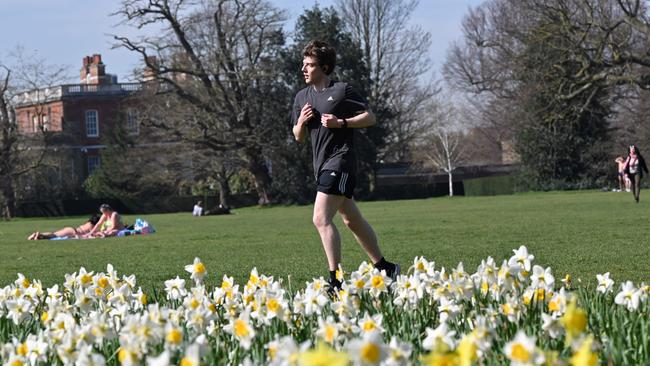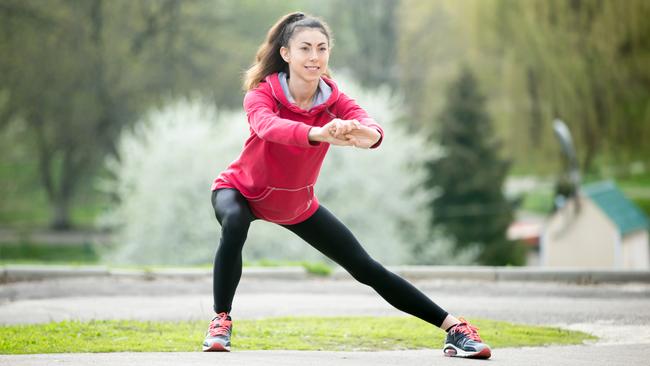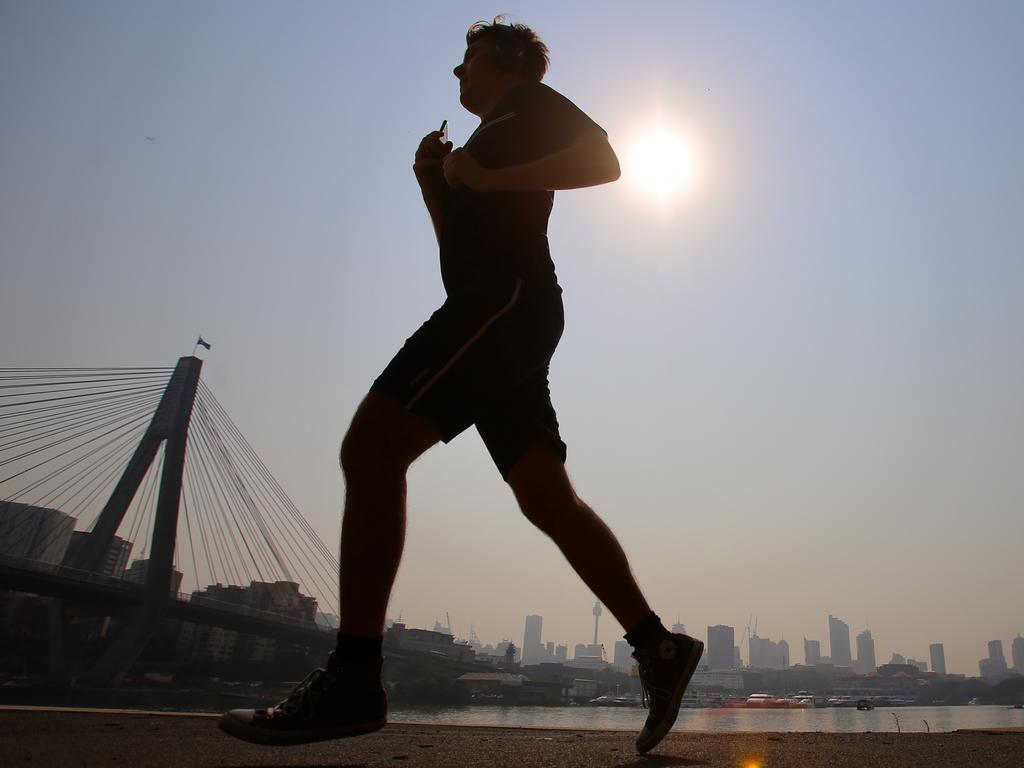What’s the least you can do and still be healthy? The lazy exercise guide
Good news: You don’t need to do 10,000 steps a day or more than two sessions of cardio a week.

The busy person — as well as the idle — will be delighted to learn that there has been scientific research into an important question: what’s the least amount of exercise you can get away with without seeing a steep decline in fitness levels?
The answer, according to the authors of a review published recently in The Journal of Strength and Conditioning Research, is that you can cut cardio sessions to as little as 13 minutes twice a week and reduce resistance training to once weekly without risking a catastrophic downturn in fitness.
For their investigation researchers from the United States Army Research Institute of Environmental Medicine, along with exercise scientists from universities in Spain and Chile, looked at how low you can feasibly go with your workouts before fitness starts to subside. Their conclusion: you can make “large reductions in exercise frequency and volume”, provided that you put in some effort when you do your minimised workout sessions each week.

But there are caveats. They looked only at studies in which participants had been exercising consistently for four weeks and at the effects on fitness parameters, not on weight loss or health. “If you are unfit to start with, you can’t get away with doing less and should still be aiming for more time on your feet every day,” says Dr Theocharis Ispoglou, a reader in nutrition and muscle health at Leeds Beckett University.
Still, the message is that if you exercise regularly you can get away with doing much less and still stay fit. “The concept of minimal dose exercise is a huge trend in elite sport and we are studying how professional footballers can minimise weekly strength training sessions when they have to play two matches a week as well as fit in other training,” says Dr Dave Clark, a senior lecturer in strength and conditioning at Liverpool John Moores University’s school of sport and exercise sciences. “But the idea that we can minimise exercise is filtering down to general fitness.”
Aerobic: you need only 13 minutes twice a week
According to the new JSCR study, a level of endurance fitness can be maintained for up to 15 weeks on as few as two cardio sessions a week, or, if you usually do a 45 to 60-minute workout, it can be cut to as low as 13-26 minutes per session.
What matters, they point out, is that the intensity (or the heart rate reached) of reduced workouts is high — that means all-out effort on runs or high-intensity interval training sessions.
“If someone chooses to exercise only twice weekly but for 15 minutes each time, they have to exercise at relatively high intensity of about 70 to 85 per cent of their maximum heart rate,” Ispoglou says. “Or they can exercise for 30 minutes at a slightly lower but still challenging intensity of 50 to 75 per cent of their maximum heart rate.”

Weights: once a week
If you have been lifting weights consistently, strength can be maintained without any training for up to three to four weeks. “Strictly speaking you can temporarily lose strength before this but it comes back so quickly during retraining that it doesn’t matter,” Ispoglou says. “However, it gradually declines beyond this point if you do nothing. That said, you can maintain any strength gains with one good session a week.”
In the JSCR paper the team found that muscle strength and size can be maintained for up to 32 weeks with a single bout of strength training each week and just one set of repetitions per exercise (older exercisers might need to do more to maintain muscle size, but even so it meant only up to two strength sessions a week).
According to a soon-to-be-published study involving 14,690 participants, once a week might be enough in the longer term. For this latest paper, researchers from Solent University’s faculty of sport, health and social sciences and the Ukactive Research Institute looked at the effects of a once-weekly 20-minute strength training session comprising six exercises performed slowly (10 seconds up, 10 seconds down) on gym machines — chest press, abdominal flexion, back extension, hip adduction, pull down and leg press — over almost seven years. Their results showed that the ultra-minimalist strength plan produced 30 per cent strength gains in the first year, rising to 50 per cent at the end of the study, enough to make a positive difference to muscle and general health.
Balance: one minute a day

Balance declines with age and it matters because a lack of it predisposes us to falls and injury. A slew of balance aids, from wobble boards to Bosu balls, have appeared on the market in recent years promising results with specific workout programs but these can be replaced by a simple exercise performed daily as you brush your teeth: standing on one leg.
In studies funded by the EU and the UK Medical Research Council, a team of researchers at Manchester Metropolitan University led by Jamie McPhee, a professor of musculoskeletal physiology, found that whereas young adults can easily stand on one leg, eyes closed, for 30 seconds, the average 70-year-old manages only four to five seconds, regardless of how fit and strong they are. Other trials have shown that people in their fifties who can stand on one leg for 10 seconds with their eyes closed are more likely to be fit and well in 13 years’ time than those who lack balance.
McPhee says we should balance on one leg daily, eyes open to start with, then progressing to eyes closed until we can manage 30 seconds on each leg. “Then try squatting down on one leg or moving your centre of mass by swaying on one leg with eyes closed,” he says. “Challenge your balance every day.”
Steps: you don’t need 10,000 a day

A daily total of 10,000 steps is the default goal of activity trackers and considered a pinnacle of daily achievement. “Step counts are very arbitrary and we don’t yet know the minimum requirement,” says Dr Juliette Strauss, a senior lecturer in exercise and health metabolism at Liverpool John Moores University.
Certainly science suggests that health benefits come when a much lower level of daily steps is accumulated. Two years ago a team from Harvard Medical School looked at data from 17,000 older women who had worn an activity tracker for a week between 2011 and 2015. Reporting in the journal JAMA Internal Medicine, they found that those who did 4500 daily steps were also about 40 per cent less likely to have died than counterparts who managed only 2700. Walking pace and intensity didn’t affect the outcome.
Others have suggested that 5500 steps for men is sufficient to bring about health benefits, while taking 4000 extra daily steps (for a daily total of 8000) was shown to cut in half the risk of dying early from heart disease, cancer or any other cause by researchers at the US National Institutes of Health and the Centers for Disease Control and Prevention last year.
There’s no proof that warm-up stretches prevent injury
Are you one of those people who spends 10 minutes stretching before a gym session or run? You’d be better of ditching it in favour of other warm-up activities.
There’s little evidence that pre-workout static stretching (ie holding the stretch) helps to protect against injuries — indeed, some researchers believe that being too flexible raises the risk of getting hurt. And several years ago a Cochrane review found that stretching before or after a workout does little to prevent muscle soreness.
“There’s definitely no need to include static stretching in a warm-up and there is evidence that it might even undermine your performance in high-intensity sessions involving sprints or weights,” Clark says. “When you hold a stretch it increases the laxity of the muscles and tendons and throws the muscle into a protective mode in which it temporarily loses its capacity to exert maximal force.”
What to do instead? If you are heading out for a run or cycle the advice is simply to start at a slower pace and gradually allow your body to warm up. For more intense workouts Strauss says to raise your body temperature by doing the activity (or similar) that will form the bulk of your main workout — so jogging, skipping, swimming, cycling — at a lower intensity for several minutes before adding some “dynamic exercises that use similar movement patterns and increase range of motion (leg swings before running, high knees before cycling, side steps for tennis) that are more effective than static stretching”. Then add brief five to 10-second bursts of high-intensity effort before breaking into the workout proper.

You don’t really need to cool down
Spending a chunk of your workout time cooling down is not necessary and, in a paper published in the journal Sports Medicine, Dr Jonathan Peake, a lecturer at the school of biomedical sciences at Queensland University of Technology, and Bas Van Hooren, a sport scientist, reported that “active cool-downs are largely ineffective for improving most psychophysiological markers of post-exercise recovery”.
What you shouldn’t do is stop suddenly, especially after a really hard workout. Strauss says the best approach is to “gradually reduce exercise intensity and therefore heart rate as you finish your exercise”. In other words, slow down for the last few minutes: cool down accomplished.
The Times







To join the conversation, please log in. Don't have an account? Register
Join the conversation, you are commenting as Logout